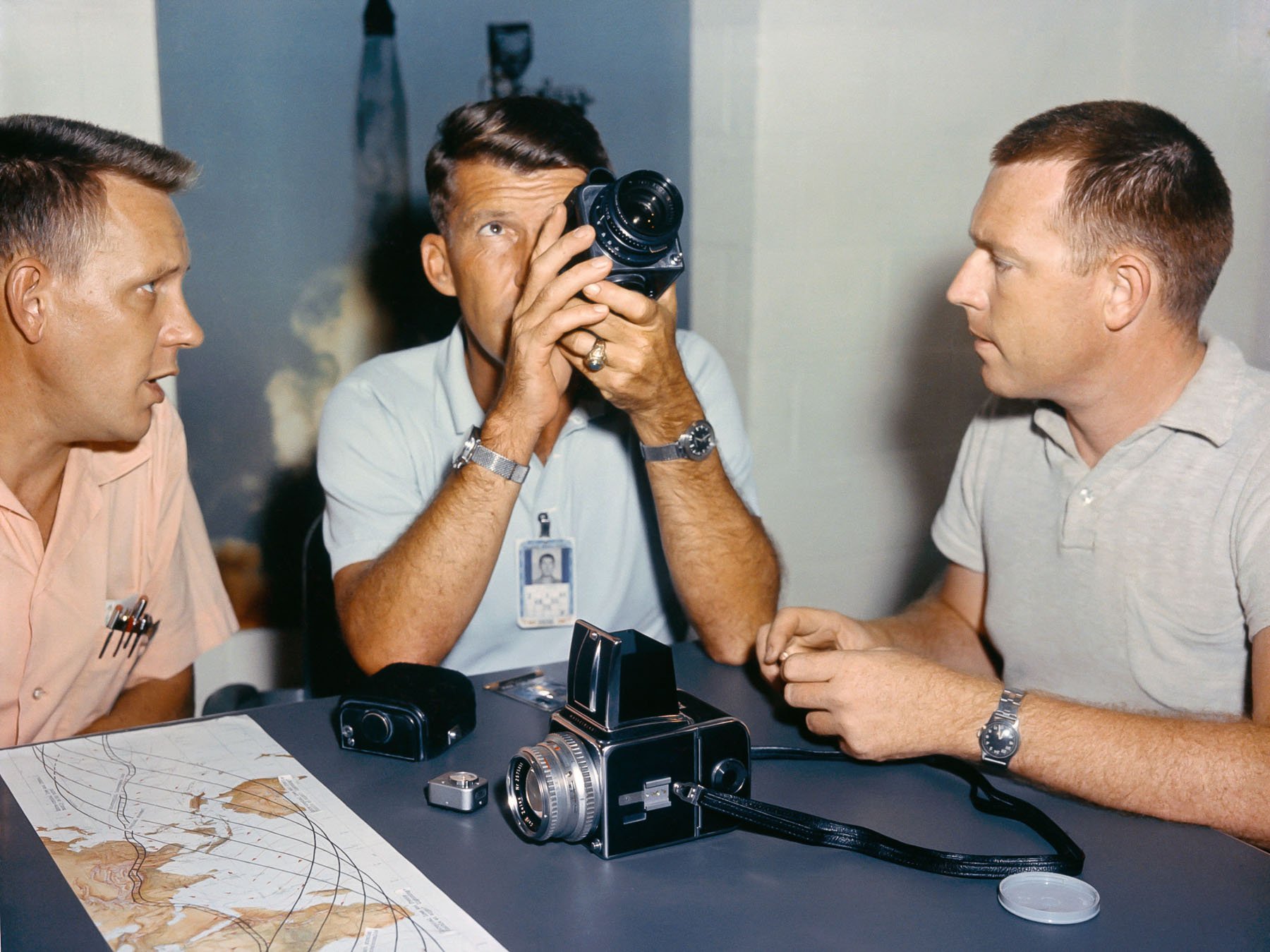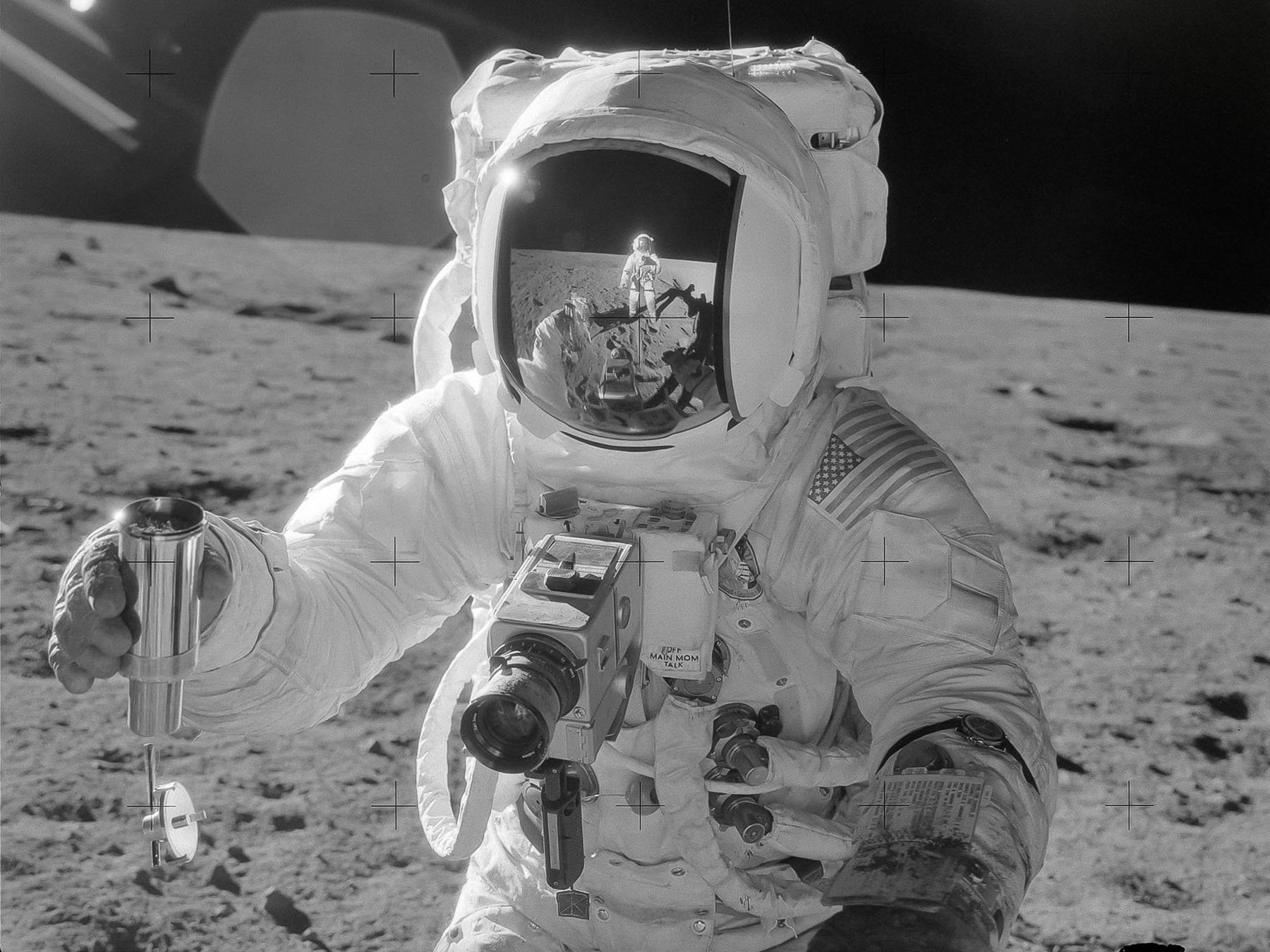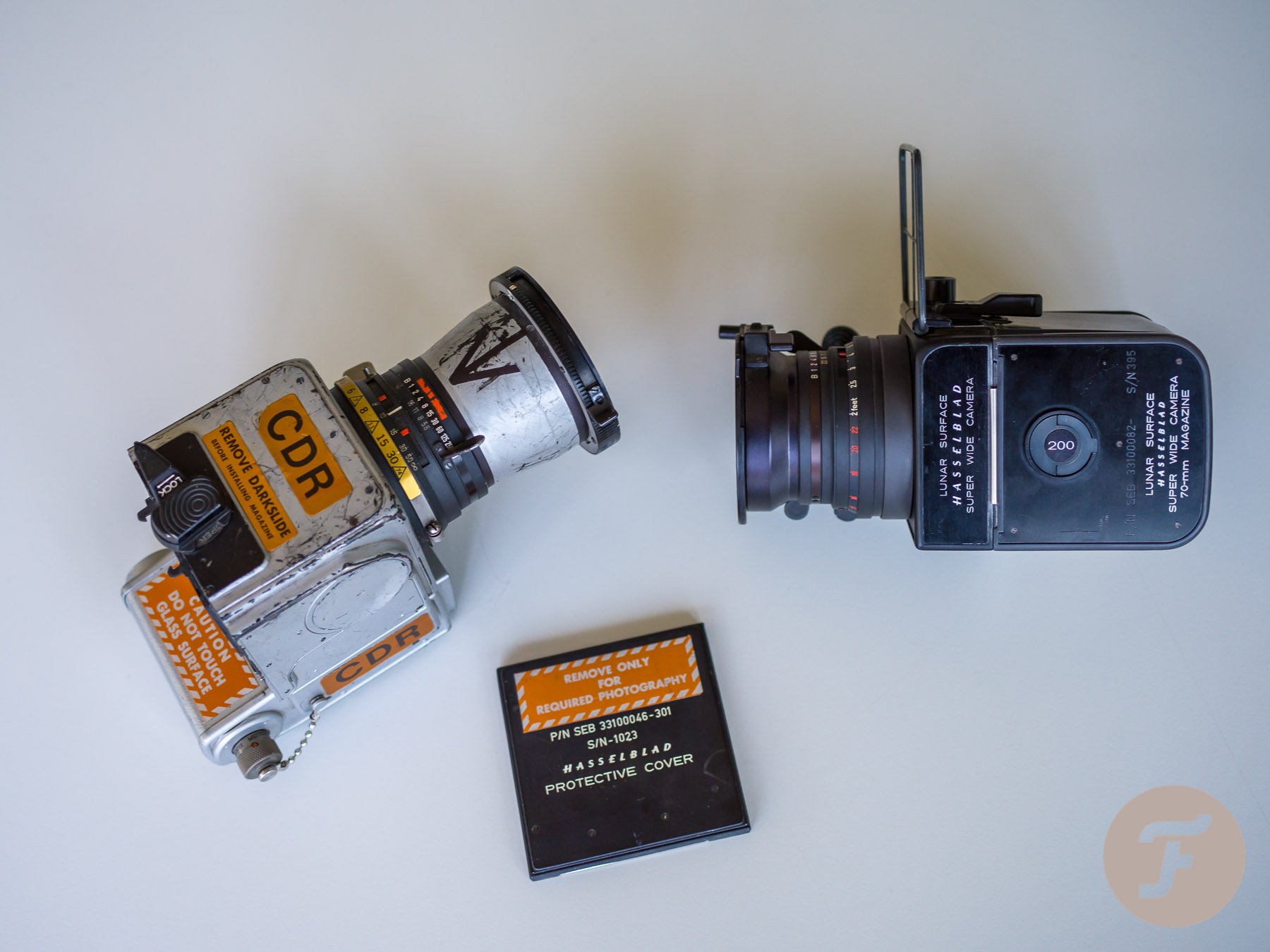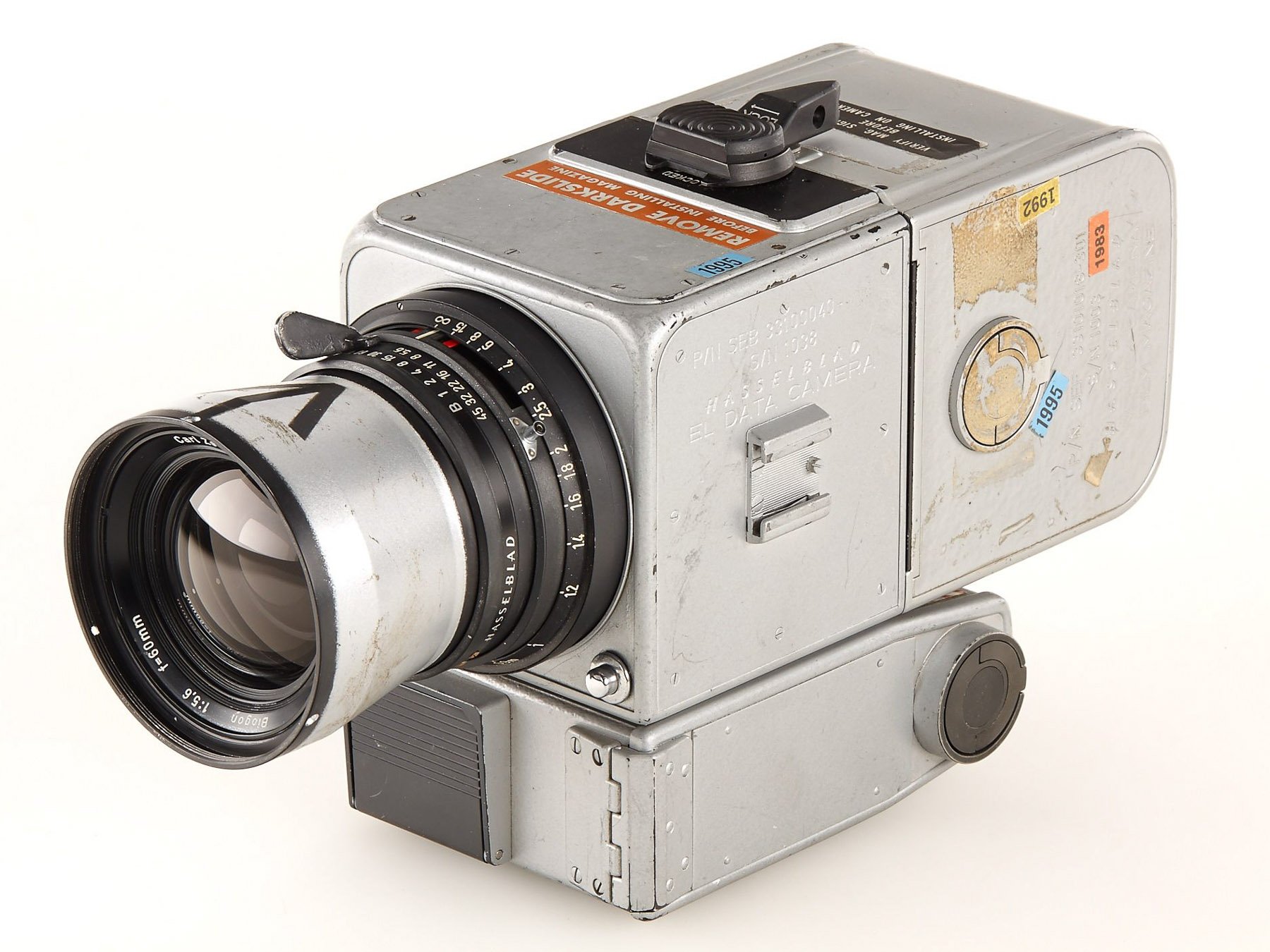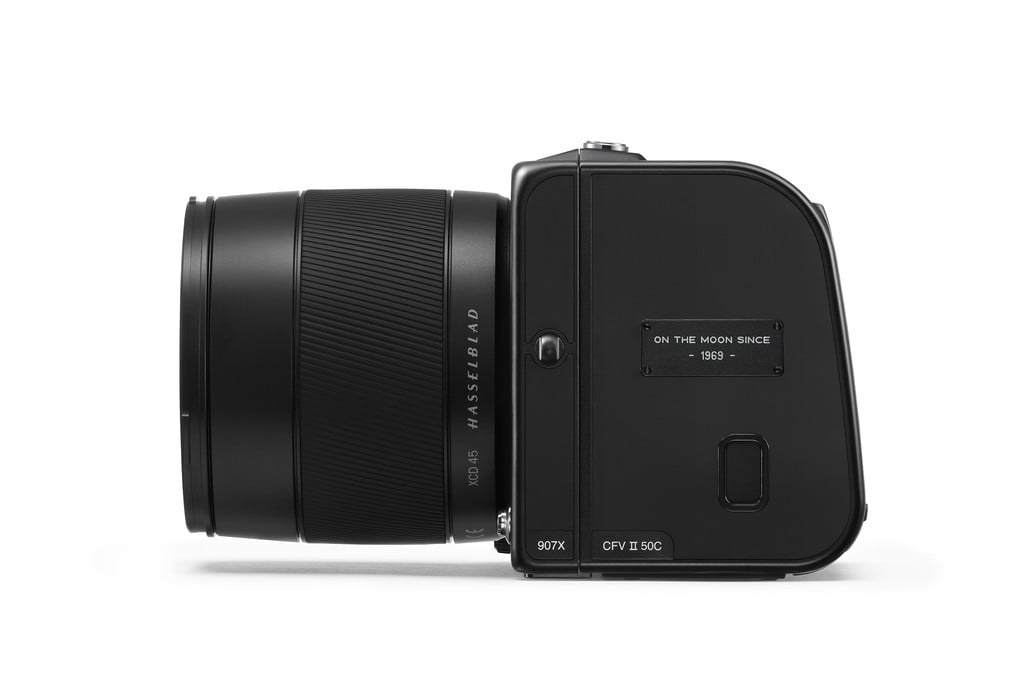Hasselblad, the First Camera Worn on the Moon
Already mentioned in our La Lune Exhibition visit report, at Fratello, we love things related to space travel, ignited by the Omega Speedmaster Professional, a.k.a. The Moonwatch, however, easily extended to other items. Our special interest goes to flown objects, watches at best, but objects like pens and cameras appeal to us as well. And it’s no secret that many watch lovers and collectors have a special place in their heart for photography and cameras as well. So whats more obvious that an article on cameras used in space?
Hasselblad Cameras, Astronauts Choice
From the beginning of manned space exploration, the Swedish brand Hasselblad has been the astronaut’s choice. Unmodified Hasselblad 500C medium format cameras were first used on the last two Mercury missions in 1962 and 1963. Then Hasselblads were used again at the Gemini spaceflights in 1965 and 1966. In addition to the excellent mechanical and optical properties of the cameras and their Zeiss lenses, the cameras were relatively simple to use, and the film was pre-loaded into magazines that could easily be interchanged in mid-roll when lighting situations changed.
From 500 EL to Lunar Surface Data Camera
After the Mercury and Gemini missions, Hasselblad cameras were used on all Apollo, 7 to 17, missions as well. Photography of the lunar surface was considered an important goal of the Apollo program. In 1965 Hasselblad launched its EL camera, which was perfectly in line with the requirements of engineers at NASA. They needed a camera that could take a sequence of photos at short intervals. The development of an adapted 500 EL camera for astronautical use went on to 1968 when NASA provided its definitive requirements. To have the Hasselblad 500 EL meet NASA’s Lunar Surface Data Camera requirements, the company modified the shutter mechanism, chose special lubricants for the lens, and accelerated the development of a 70mm high-capacity film magazine. Additionally, Eastman Kodak developed a thinner film emulsion. A combination that resulted in getting hundreds of shots out of a single magazine.
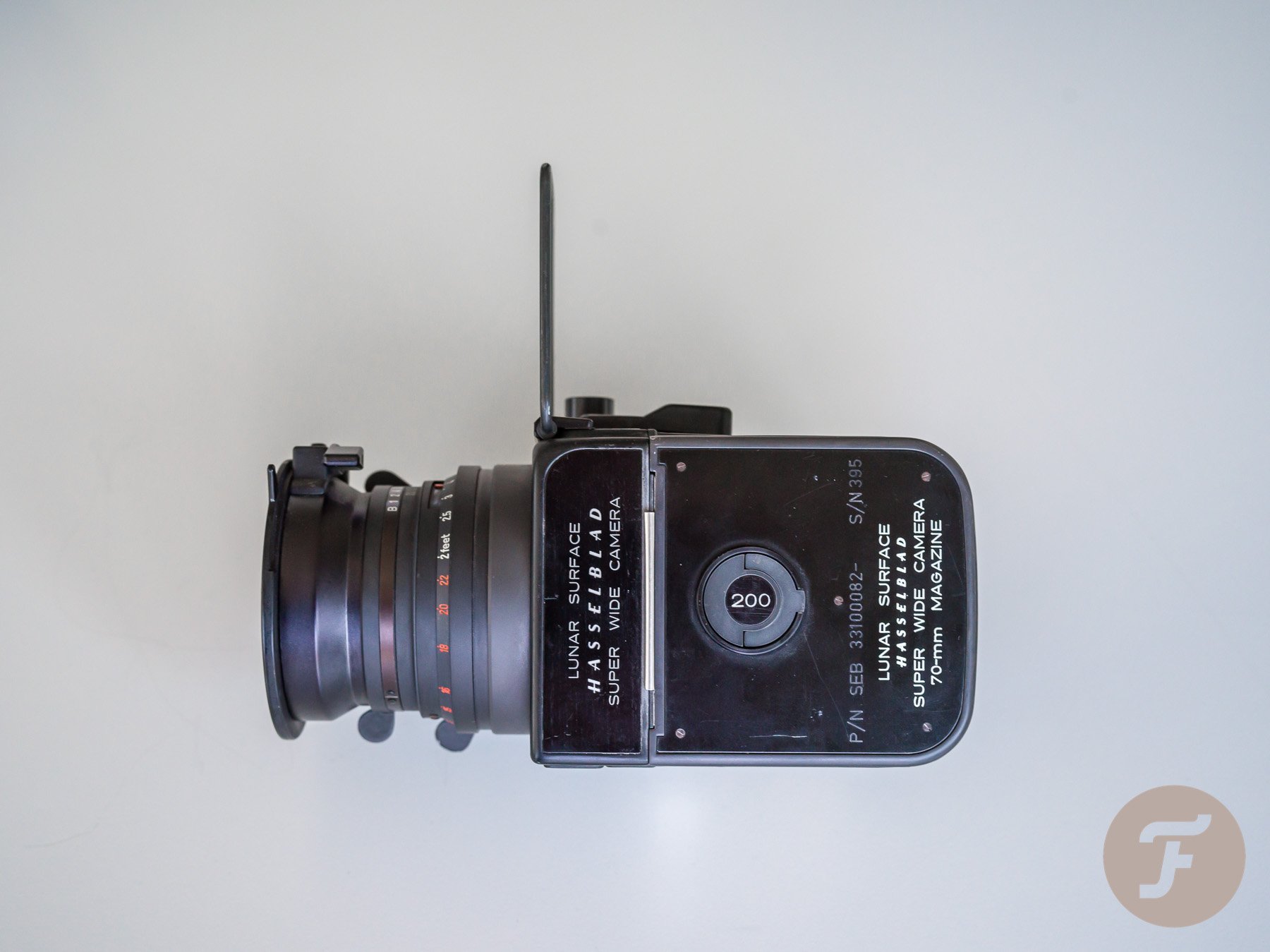
A Hasselblad LSC (Lunar Surface Camera) camera with 70mm magazine at the Omega Museum in Biel, Switzerland (on loan from NASA) pictured by a Hasselblad X1D II 50C
The use of Hasselblad cameras during the Apollo program was incredibly diverse. They were used to document operations and maneuvers, to obtain convergent stereoscopic coverage of candidate landing sites, to photograph preselected orbital science targets, different terrain types near the terminator, astronomical phenomena, views of the Moon after transearth injection, views of Earth, and to acquire special UV spectral photographs of the Moon and Earth.
A Hasselblad on the Moon
Like the earliest Hasselblad carried on Mercury flights, the Hasselblad Lunar Surface Data Camera (HDC) lacked a conventional viewfinder. Instead, astronauts went through training on Earth to learn how to aim the camera by feel from chest-level, where it was attached to the spacesuit. Out of all the missions that Hasselblad cameras were used on, it was, of course, Apollo 11 that was the greatest of them all. The iconic moment that saw the first human step off our planet and onto another celestial body. Withstanding extreme temperature changes and lack of gravity in space, the Hasselblad cameras captured this once in a lifetime moment perfectly, letting the rest of Earth see what astronauts Aldrin and Armstrong experienced on the Moon.
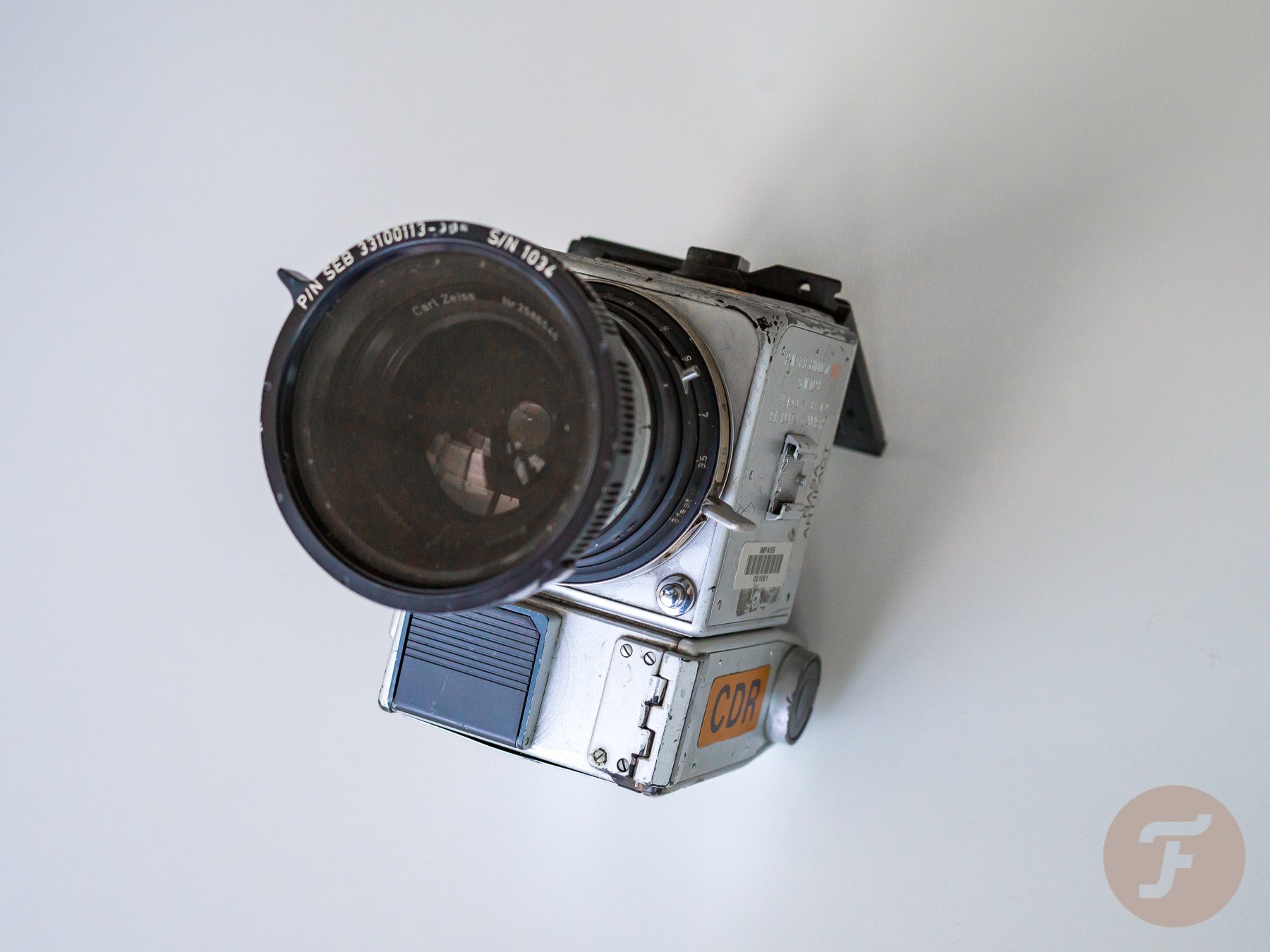
A flown Hasselblad Data Camera (HDC) at the Omega Museum in Biel, Switzerland (on loan from NASA) pictured by a Hasselblad X1D II 50C
On the Apollo 11 mission, taken onto the lunar surface, was a silver Hasselblad Data Camera (HDC). Fitted with a Zeiss Biogon 60mm ƒ/5,6 lens and the earlier mentioned 70mm film magazine, containing the specially formulated thin-base Kodak film, which allowed for 200 images per magazine. Installed in the HDC was a Réseau plate, which optically imprinted fixed cross-marks that allowed for photogrammetric measurements to be made from the resulting negative. Armstrong carried out all the photography himself on the lunar surface with this HDC attached to his chest. Something which had never been tested in space before.
On the picture here above, the late astronaut Alan L. Bean can be seen walking on the Moon with a Hasselblad camera attached to his suit during the Apollo 12 mission in November 1969. Attached to his left arm, his Omega Speedmaster Professional can be clearly seen as well. Hasselblad cameras were used, in more or less the same configuration, during all Apollo missions to follow. Until the last mission – Apollo 17 – in December 1972. During the Apollo missions, no less than 19,788 pictures were taken with Hasselblad cameras with 70mm magazines. All images can be found on-line at the USRA Lunar and Planetary Institute.
Where are these cameras now?
Most cameras used in Moon-surface missions, and certainly those used with Apollo 11, have been left behind. A few of the cameras, however, returned. NASA was nervous about having enough fuel to get off the moon and back to the orbiting command module. As a result, they imposed strict weight-limits on what the astronauts could take home. Moon rocks, of course, are more valuable than cameras. So, the astronauts were instructed to pack the exposed film but leave behind the Hasselblads. And, that’s where most of the Apollo missions cameras remain today, on the Moon, at the six Apollo landing sites.
The returned cameras are owned by and in possession of NASA, and some of them have been on loan to the Smithsonian National Air & Space and other museums (like the ones pictured below at the Omega Museum in Biel).
A flown camera in private hands?
And then there’s one camera which inexplicably came in private hands. Most probably, Apollo 15 astronaut James Irwin, as usual, had been instructed to remove the film cassette and toss the camera out onto the moon before returning to Earth. But it seems that Mitchell stowed the camera onboard the lunar module and took it home. This camera, one way or the other, came in the hands of Alain Lazzarini, who decided to put it up for auction in 2012. Shortly after the passage of the bill that gave Apollo and Mercury astronauts rights to their space stuff. Lazzarini, a Hasselblad collector and the author of the book “Hasselblad and the Moon,” sold the camera at a Boston auction for $42,704,=.
As mentioned, per a 2012 (Obama) law about space memorabilia, astronauts are allowed to keep mementos that have been expressly given to them. But the camera was not officially given to Irwin as a souvenir. If NASA formally dispossessed it, it would have been through other means. And if it didn’t go through official channels, the camera may have technically been “stolen”. If it is indeed the camera that was used by Jim Irwin, then he didn’t return it to Earth as a souvenir, so the 2012 law that made it legal for Apollo astronauts to keep (or sell) their lunar-returned mementos would not seem to apply. Irwin was reprimanded by NASA administrators already for taking an unauthorized set of commemorative postage stamp covers to the moon at the request of a German stamp dealer. When NASA officials discovered that the covers were up for sale in Germany a few months after his mission had ended, they removed Irwin and his crewmates from flight duty. Congress launched an investigation.
…a controversial camera
Besides the legal questions, the camera became a subject of controversy as well. Since questions about the camera began to circulate before the auction, Westlicht backed off an earlier claim that this was ‘the only’ camera to return from the moon, which it was clearly not. Some space stuff enthusiasts still aren’t convinced that the camera went to the moon at all, pointing to a few other discrepancies. For instance, the cross-hairs and the number “38” that appear on photos released by the auction house don’t seem to line up with photos Irwin took on the moon.
Well, anyhow. This camera, but with a different lens and film magazine as when it was auctioned in 2012, came up for auction again in 2014 at Austrian Westlicht. Japanese collector and founder of Yodobashi Camera retail chain, Terukazu Fujisawa, won a hotly contested auction with a bid of € 550,000.=, which together with a premium for the auctioneers’ fees brought its total price to € 660,000.=.
Present Day
As we all meanwhile know, this year is the 50th anniversary of the Moon landing. And just like Omega brought the commemorative editions of the Speedmaster Professional, Hasselblad has introduced a commemorative edition of their digital medium format 907X camera as well. The 907X Special Edition includes the 907X camera body and CFV II 50C digital back, both in matte black. Just like the HEC used by Collins that made it back to Earth. On the digital back is the text “On the Moon Since 1969”, commemorating the cameras left behind on the lunar surface fifty years ago. Together, the 907X and CFV II 50C connect Hasselblad’s photographic history into one system. Photographers can then add any of Hasselblad’s XCD lenses or support to V, H, or XPan systems through available lens adapters. The XCD 45 lens shown is not included with the 907X Special Edition.
Please click here to find out more about the Hasselblad 907X Special 50th Anniversary Moonlanding Edition.

